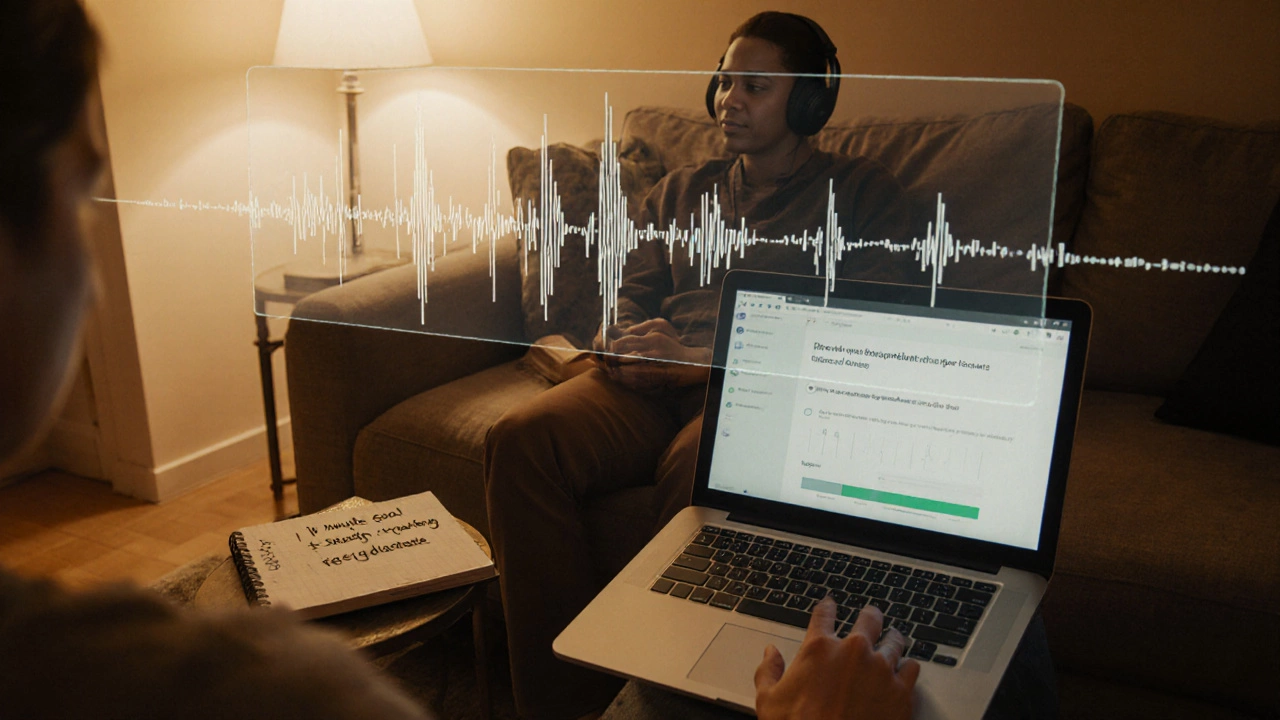English Speaking App Recommender
Find Your Perfect English App
Answer a few quick questions to get personalized recommendations based on your budget, experience level, and learning priorities.
Recommended Apps
Want to speak English without stumbling over words? The right English speaking app can turn daily practice into real confidence. Below you’ll find a quick rundown of what to look for, a hand‑picked list of the best options for 2025, and proven tricks to turn screen time into spoken fluency.
Quick Takeaways
- Focus on apps with AI‑driven speech recognition and live‑tutor features.
- Pick a platform that matches your schedule - short daily drills or longer conversation sessions.
- Free tiers are great for basics; a modest subscription usually unlocks real‑time feedback.
- Combine multiple apps to cover vocabulary, pronunciation, and cultural nuance.
What Makes an App a True English Speaking Companion?
When an app claims to improve speaking, ask yourself these three questions:
- Does it listen to me? Real‑time speech analysis tells you if you’re hitting the right sounds.
- Does it talk back? Instant corrections or chatbot replies keep the conversation flowing.
- Does it keep me coming back? Gamified streaks, daily challenges, and community interaction turn learning into a habit.
If an app checks all three, you’re looking at a solid fluency builder.
Top English Speaking Apps in 2025
Below are the seven apps that consistently outperformed others in independent tests and user reviews this year.
Duolingo is a gamified language platform that introduced AI‑powered speech checks in 2023. Its bite‑size lessons make it easy to practice on the commute.
- Best for beginners who want a fun, low‑pressure start.
- Speech score range: 70‑90% accuracy after 4 weeks of daily 5‑minute sessions.
- Free tier includes limited speaking drills; Premium removes ads and adds offline mode.
Babbel focuses on real‑world dialogues and offers a built‑in pronunciation coach that compares your voice to native speakers.
- Ideal for intermediate learners seeking structure.
- Live‑tutor add‑on (extra $9.99/mo) gives 15‑minute spoken practice with certified teachers.
- Course lengths: 10-15 minutes per lesson, 3‑month completion path for fluency basics.
Rosetta Stone uses immersive audio‑visual scenes and a TruAccent speech engine that claims 97% pronunciation accuracy.
- Best for learners who prefer total immersion without translations.
- Offers a 30‑day free trial with full speaking exercises.
- Annual subscription: $199, includes unlimited live tutoring.
HelloTalk connects you with native speakers worldwide for text, voice, and video exchanges.
- Great for cultural exchange and building a real conversation habit.
- Voice correction feature highlights mispronounced syllables in real‑time.
- Free version is feature‑rich; VIP membership ($5/mo) unlocks unlimited translations.
Busuu blends AI‑driven speaking exercises with feedback from a community of native speakers.
- Offers a “conversation practice” mode where you record answers and receive corrections.
- Certification tracks align with CEFR levels (A1‑C1).
- Premium annual plan: $79, includes personalized study plans.
Tandem is a language‑exchange marketplace that pairs you with native speakers for mutual practice.
- Voice and video calls simulate real‑life situations.
- AI‑assisted correction tool flags pronunciation errors as you speak.
- Basic free tier; Pro subscription ($9.99/mo) adds unlimited translation and lesson storage.
Memrise uses spaced‑repetition and short video clips from native speakers to teach natural phrasing.
- Speech‑recognition quizzes test pronunciation instantly.
- Community‑created courses cover niche topics like business English or travel slang.
- Pro plan ($12/mo) gives access to offline mode and advanced analytics.
Side‑by‑Side Comparison
| App | Price (Monthly) | Speech Recognition | Live Tutor Access | User Rating (App Store) |
|---|---|---|---|---|
| Duolingo | Free / $12.99 Premium | AI‑driven, 80% accuracy | Optional add‑on $9.99 | 4.7 |
| Babbel | $13.95 | Pronunciation coach, 85% accuracy | Yes, $9.99 add‑on | 4.6 |
| Rosetta Stone | $199 annual | TruAccent, 97% accuracy | Unlimited with subscription | 4.5 |
| HelloTalk | Free / $5 VIP | Real‑time correction | Community peer feedback | 4.4 |
| Busuu | $9.99 | AI feedback, 82% accuracy | Yes, included | 4.5 |
| Tandem | Free / $9.99 Pro | AI correction overlay | Peer‑to‑peer only | 4.3 |
| Memrise | $12 | Quiz‑based speech check | No live tutor | 4.6 |
How to Maximize Fluency Using an App
Even the best app won’t work if you treat it like a game you play once a week. Here’s a proven routine:
- Set a daily 10‑minute voice goal. Record yourself, compare the playback, and note three areas to improve.
- Use the shadowing technique. Play a native speaker clip, then repeat it word‑for‑word, matching rhythm and intonation.
- Seek corrective feedback. Apps with AI correction (Duolingo, Rosetta Stone) give instant scores; supplement with a human tutor once a month.
- Mix content types. Combine vocabulary drills (Memrise), real conversations (HelloTalk), and structured lessons (Babbel) to keep all language muscles active.
- Track progress. Most apps show a pronunciation score-aim to improve it by at least 5 points each month.

Common Pitfalls and How to Avoid Them
- Skipping the speaking part. Many learners stay in the reading section because it feels safer. Force yourself to speak; the app’s mic will remind you.
- Relying on subtitles. Turn off subtitles after the first pass to train listening comprehension.
- Choosing a ‘one‑size‑fits‑all’ app. Your level, schedule, and accent goals differ-pick the app that matches the specific need.
- Neglecting consistency. Short daily bursts beat occasional long sessions. Set a reminder.
Frequently Asked Questions
Do free versions of these apps really improve speaking?
Yes, they can build a solid foundation. Free tiers usually include daily speaking drills and basic AI feedback. For faster progress, a modest subscription that unlocks live‑tutor sessions often makes a noticeable difference.
Which app is best for absolute beginners?
Duolingo tops the list for beginners because its lessons are short, gamified, and the speech‑recognition module is forgiving enough to keep confidence high.
Can I become fluent without ever talking to a real person?
AI feedback is powerful, but fluency includes cultural nuance and spontaneous reactions that only real conversations provide. Pair an app with weekly language‑exchange calls for best results.
How long does it typically take to sound natural?
For motivated learners, 6‑12 months of consistent 15‑minute daily practice using a high‑quality speaking app can bring you to a comfortable conversational level (B2‑C1 CEFR).
Is it worth paying for a premium subscription?
If you’re serious about fluency, premium tiers unlock advanced speech analytics and live‑tutor access, cutting the time to proficiency by up to 30% compared to the free version.
Pick the app that aligns with your learning style, stick to a daily speaking habit, and watch your confidence grow. Happy speaking!





